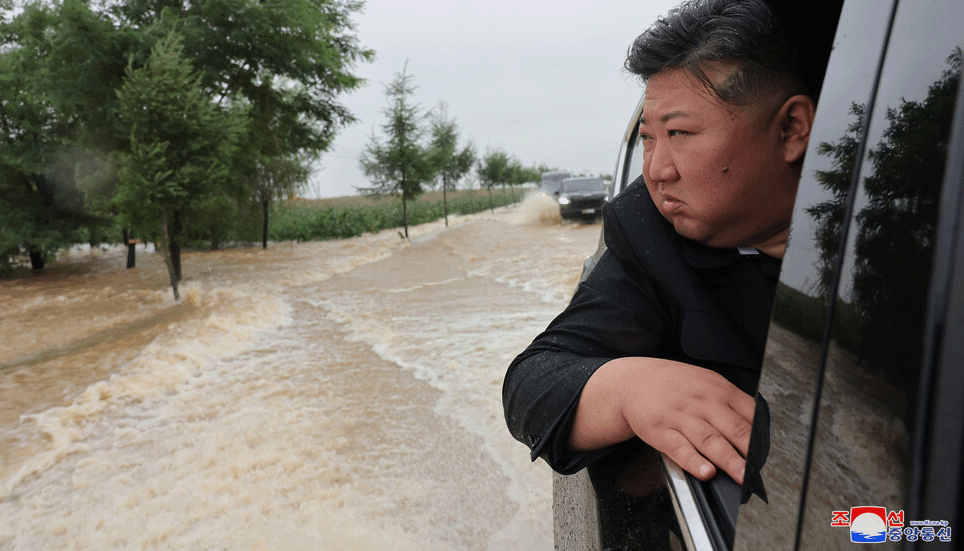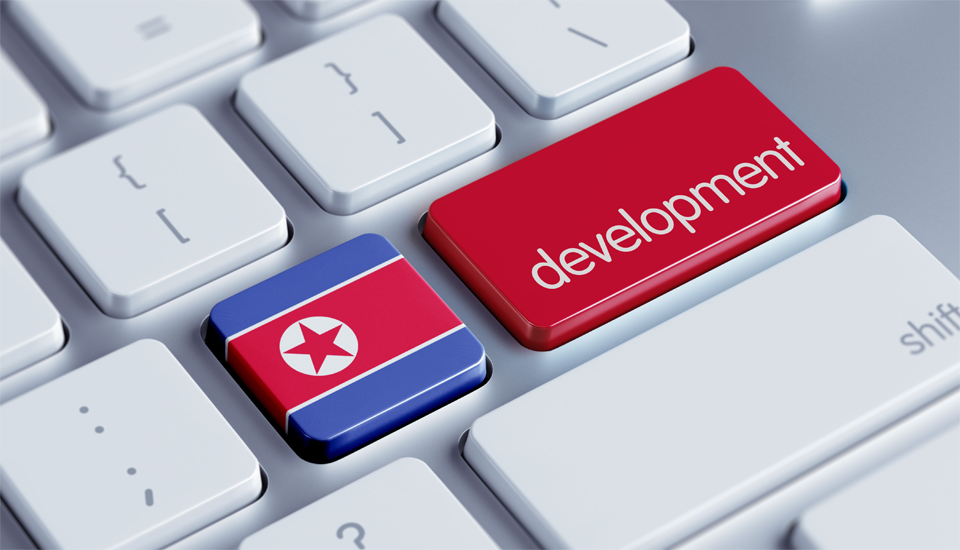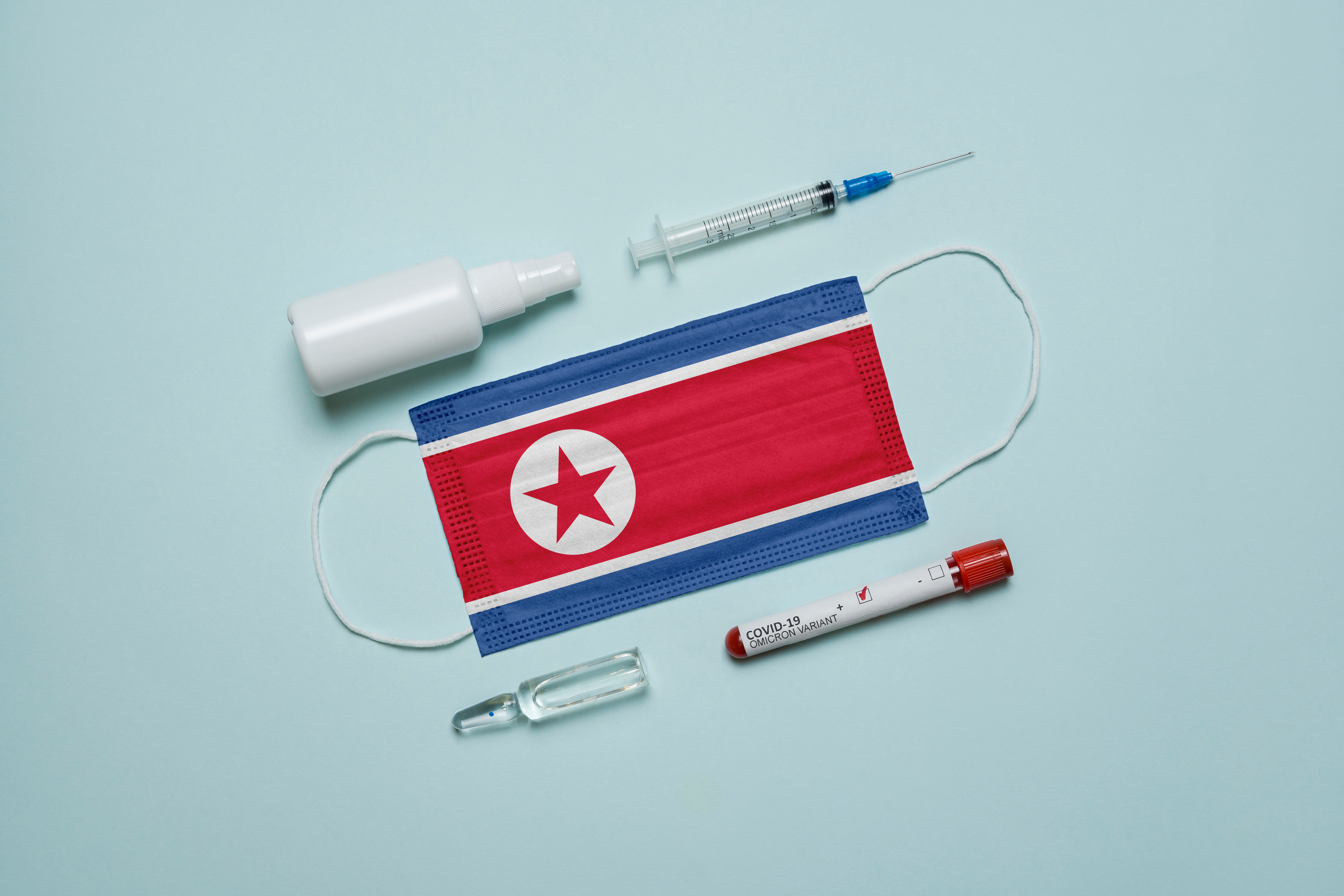In recent years, there has been a growing disconnection between the DPRK and the international community. This decoupling was driven by escalating sanctions imposed by the international community against the DPRK and was further accelerated by North Korea’s self-imposed lockdown as a response to the global COVID-19 pandemic. Despite the significant disruption in communication channels, Pyongyang has declared its readiness to continue engaging with the international community on a variety of environmental concerns, including coastline management, reforestation, and climate change adaptation.
North Korea is a signatory to the majority of key international accords on environmental and climate change issues, thus contradicting the widespread assumption that North Korea is generally either unwilling and/or unable to cooperate proactively in international institutions and organizations. As one observer aptly put it, there is in fact “no other area in which North Korea wishes for and pursues international co-operation with such a proactive and open attitude as it does on environmental policy” (Davies 2022). This apparent paradox gives rise to a number of crucial questions:
1) Why is North Korea actively participating in global efforts to address environmental issues while refusing to engage with the international community on most other issues? What are its motives?
2) In what way does North Korea engage with International Environmental Institutions (IEIs)?
3) What are the lessons that can be drawn from this particular form of engagement for other political interactions with the DPRK in other issue-areas?
Against this background, this study analyzes and evaluates the DPRK’s engagement with the UN Framework Convention on Climate Change (UNFCCC). The key objective of this study is to gain insights into the underlying rationales, motives, and strategies that drive this engagement. The study, therefore, addresses the structural dynamics of North Korea’s engagement with the UNFCCC, sheds light on the domestic actors and institutions involved, and assesses the realm of possibility and challenges for the future DPRK cooperation in the environment issue.
1. North Korea’s Motives for Engaging with the UNFCCC
Capacity-building incentives that feed into the leadership perpetuation and state survival imperatives of the North Korean government appear to drive North Korea’s interaction with the UNFCCC. Environmental vulnerabilities, which could ultimately pose a threat to regime stability, compel North Korea to participate in international environmental cooperation for the sake of its own self-interest.
1.1 Reducing Climate Change-Related Risks
North Korean leader Kim Jong Un has blamed climate change as one of the reasons for the its ongoing food crisis and cataclysmic floods that have battered the country. The “danger” of an “abnormal climate,” he said, has risen steadily in the last few years, adding that officials must begin to work towards an “active and ambitious plan” to improve rivers, manage erosion control, maintain dykes, and start tide embankment projects as part of the its regular Five-Year Plan. Typhoons last year, as well as erratic weather alternating between monsoon rains and droughts, also obliterated the its supply of food. All of this poses a risk to the Kim government and the engagement with the UNFCCC is one of several venues through which North Korea aims at reducing climate change-related risks.
1.2 Financial and Capacity/Transfer Gains
While climate change poses a real threat to North Korea, engaging with institutions such as the UNFCCC also provides tangible financial opportunities. The Clean Development Mechanism (CDM) scheme is a vivid example that its engagement with the UNFCCC provides an opportunity for North Korea to receive funding for the construction of alternative energy sources. These are not only critical for alleviating its chronic energy shortages, but also provide an opportunity to acquire carbon credits that can be sold on the international carbon market. Given North Korea’s structural economic crisis, the impact of harsh international sanctions and the challenges emanating from its self-imposed national lockdown following the outbreak of the Covid-19 pandemic, the interest in CDM might well be part of Pyongyang’s search for alternative ways to earn hard currency. Documents from UNFCCC and a 2016 report from the Hyundai Research Institute show that North Korea was initially hoping to generate over $5 million a year by selling carbon credits in the UN’s carbon market (Byrne 2016). However, it took several years to complete the relatively small hydropower stations, and given the its negative international reputation, it is difficult to find buyers for the its carbon credits. The comprehensive sanctions of the international community pose an additional burden in this regard.
2. North Korea’s Climate Change Policy under Kim Jong Un Regime
2.1 Mitigation Policy
Mitigation policy involves reducing greenhouse gas (GHG) flow into the atmosphere, either by reducing sources of these gases or enhancing the “sinks” that accumulate and store the gases (NASA n.d.). In fact, for a long time mitigation did not appear as a significant challenge in implementing major climate actions in North Korea. Ironically, in the 1990s, North Korea was one of the few countries that had significantly reduced their GHG emissions compared to previous decades. However, a closer look reveals that this decrease in North Korea’s CO2 emissions was not the result of successful mitigation policies, but rather of North Korea’s systemic economic crisis which, in addition to chronic shortages of consumer goods, food and capital, was characterized by a dramatic energy shortage (Calder 2004).[1]
Despite its relatively low overall contribution to global GHG emissions, rising energy consumption and increased reliance on coal has meant that North Korea’s cumulative CO2 emissions have again continuously increased, with estimated national emissions in 2020 of 116.36 million tCO2e. Under a business-as-usual scenario, emissions are expected to grow by as much as 50% until 2030, according to the 2019 Green Climate Fund (GCF) proposal.
In the DPRK’s Second National Communication on Climate Change (2012), the following gaps and shortcomings were emphasized regarding the DPRK’s climate change mitigation policy:
• Unclear institutional framework for mitigation assessment and lack of relationship between stakeholders
• Insufficiency of data for projection of emission trends and their high uncertainty
• Nonexistence of the Nationally Appropriate Mitigation Actions (NAMAs) plan, and the strategy and action plan for CDM activities
• Complexity in management procedure of CDM and lack of connection with CERs buyers
• Lack of legal and institutional frameworks to promote introduction of energy efficiency improvement and renewable energy, and inexistence of energy efficiency standards
• Lack of financial resources for implementation of mitigation options
• Lack of capable experts, insufficient training and lack of application capacity of mitigation assessment models
Against this background, the DPRK proposed a number of recommendations for GHG abatement, thus introducing the its GHG mitigation strategies, policies and measures in a number of its official documents. North Korea’s mitigation strategy mainly focuses on modernization, improvement, and capacity-building policies and measures, and emphasizes the necessity to increase efficiency and sustainability in various sectors such as energy supply, transport, forestry, and waste management.
One of the key points of mitigation policy is the utilization and popularization of renewable energy, which reduces GHG emissions. North Korea expressed interest in introducing renewable energy technology and attracting investment as a way of overcoming its energy shortages. Indeed, renewable energy systems may be the most appropriate means in order to increase DPRK’s energy capacity because renewable energy sources can be scaled locally which also reduces their up-front cost (Yi and Sin 2011). Moreover, as Habib rightly points out, “renewables offer North Korea considerable scope for technology transfer, infrastructure upgrades and income streams through the vehicle of the Kyoto Protocol’s Clean Development Mechanism (CDM)” (Habib 2013, 72). They also provide complementary benefits to Non-Annex I participants, including technology transfer, rural energy provision, pollution reduction, and economic development (UNFCCC 2012). The Clean Development Mechanism may, therefore, present clear tangible benefits to the North Korean government in a key sector of the North Korean economy where redevelopment is urgently needed.
However, it seems that during the Kyoto Protocol era the North Korean regime viewed renewable energy not as a domestic policy but as a means to attract foreign aid because its development and supply would require enormous financial investment (Choi 2021, 31). This, together with North Korea’s comparatively low levels of GHG emissions due to its decrepit economy and absolute energy shortages which made and continue to make adaptive measures more pressing, explains why most of the climate change policies that North Korea has carried out with or without any foreign aid or assistance can be classified as adaptation policies (Choi 2021, 10).
2.2 Adaptation Policy
Adaptation policies were the themes of the very first rojak (top leader’s articles or speech)[2] that Kim Jong Un issued to the masses soon after he gained all three major titles of Korean People’s Army (KPA) Supreme Commander (December 30, 2011), First Secretary of the Worker’s Party of Korea (WPK) (April 11, 2012), and National Defense Commission (NDC) First Chairman (April 12, 2012). The work, published by Rodong Sinmun and Korean Central News Agency (KCNA) on May 8, 2012, was entitled “On Bringing about Revolutionary Changes in Land Management in Line with Demands of Building a Socialist Powerful State.” It emphasized national capacity building centered on adaptation measures which included land management initiatives such as targeted measures for the rainy season, dredge riverbeds, the establishment of dikes in order to prevent the burial or loss of tilled land, a reforestation campaign, and water management initiatives to prevent flood and drought damage. Overall, land management and environmental protection are described as an “all-party, nationwide, and all people work” endeavor. Kim Jong Un’s emphasis on land management and national capacity-building for disaster prevention immediately after the official succession can be interpreted as reflecting his political will to preemptively respond to challenges from natural disasters caused or intensified by climate change.
The DPRK possesses a relatively limited adaptive capacity due to the its low gross domestic product (GDP) per capita and the limited opportunities for transparent investment in sustainable development. Contrary to a number of other non-Annex 1 parties to the UNFCCC, North Korea has not benefited from increasing levels of international support to promote technology transfer, capacity development and the development of strategies to further mitigation and adaptation priorities. North Korea has nonetheless introduced a number of crucial measures that may, in the future, contribute to an increase in its adaptive capacity.
What merits special attention in this regard is that since the early 2010s North Korea’s central media outlets have increased their coverage of climate change issues and public awareness on the matter also subsequently increased. State-run media, such as Rodong Sinmun and the KCNA, began to cover both the international community’s responses to global warming and climate change, and regularly discusses North Korea’s own policy options, broadening the discussion of climate change and its adverse effects from natural disasters and land management to include water and food crises as equally important key issues of this era. Both require domestic initiatives and international cooperation measures, and this is thus a vivid departure from the past. It also illustrates Pyongyang’s increased interest in a broader set of global issues and their regional and national effects arising from climate change.
North Korea’s environmental pollution and ecosystem destruction had already reached a serious level even before climate change and aberrational weather emerged as major global environmental issues. North Korea’s environmental problems can be largely attributed to the innate inefficiencies of its socialist system. In turn, this means that an effective fight against climate change in North Korea ultimately requires far-reaching policy changes. North Korea’s forest management, which is essential for climate change mitigation policy and adaptation policy as well, reflects this field of tension.
3. Implementation of North Korea’s Climate Change Policy
3.1 Legal Framework: Domestic Legislations and Multilateral Conventions
While DPRK’s legal framework has long remained insufficient to coordinate and react to the increasing negative effects stemming from climate change, it has in fact enacted over 50 major laws related to protecting the environment and fighting climate change over time (UNFCCC 2012, 45). This legal framework has allowed the country to accede to several multilateral environmental institutions and conventions, including the UNFCCC (signed December 5, 1994), the Kyoto Protocol (signed April 27, 2005), and the Paris Agreement (August 1, 2016) (UNFCCC 2012, 46).
3.2 Institutional Framework: Major Domestic Institutions Engaging with IEIs
3.2.1 The Ministry of Land and Environmental Protection (MoLEP)
When environmental issues surfaced as a major international concern, and weather anomalies brought to the fore various problems associated with land management, the North Korean regime, in February 1993, established the “National Environmental Protection Committee (NEPC)” under the Administration Council to “faithfully perform North Korea’s obligation to protect the global environment” (Rodong Sinmun 6/5/1993). The NEPC was upgraded to the “Ministry of Land and Environmental Protection” (MoLEP) under the Administration Council in October 1996, becoming an official ministry in charge of environmental issues in North Korea. The MoLEP has since overseen North Korea’s environmental policy, land management policy, and climate change policy.
Much like the Ministry of Forestry, however, the MoLEP is under heavy pressure to maximize production whilst also undoing the damage caused by North Korea’s over-intensive use of land and natural resources in the lead up to and wake of the Arduous March. The North’s inability to meet consumer good demand by its population also put further pressure on the Ministry, which had to contend with unofficial and unsanctioned private land use.
The MoLEP is evidently superior to the other ministries whose functions overlap with it, such as the Ministry of Forestry and Ministry of Fisheries, as relevant bureau directors from the MoLEP are more likely to take part in international and inter-Korean meetings on related subjects than individual ministries. For instance, the inter-Korean Forestry Cooperation meetings included the MoLEP Forestry Management Bureau director rather than the Minister of Forestry.
3.2.2 The National Coordinating Committee for Environment
A central organ in North Korea’s interaction with international environmental institutions and organizations – and the focal point in its relations to the UNFCCC – is the National Coordinating Committee on Environment (NCCE). The NCCE is in charge of environmental coordination between ministries in international cooperation affairs. As such, the NCCE is responsible for coordinating North Korea’s international cooperation on climate change as well as other environmental issues. It also appeals for foreign aid in the aftermath of natural disasters.
4. Key Findings and Takeaways
4.1 North Korea Has Strong Incentives and Interest in Fighting Climate Change
There is no doubt about the fact that North Korea has a strong incentive to participate in international environmental institutions. Its engagement with the UNFCCC provides an opportunity for North Korea to 1) gain support in fighting the negative effects of climate change, 2) achieve financial gains, and 3) gain support for realizing tangible projects and initiatives ‘on the ground’. Given the dramatic impacts that climate change has already had on North Korea, the expectation of further increases in these challenges in the future, and the country's relatively limited adaptive and mitigation capacities, the incentive to fight climate change is inherent. Prospects of lawful financial gains certainly is as important a reason for North Korea to engage with the UNFCCC.
Politically, however, there is another significant reason for Pyongyang to engage with the international community and intensify its efforts in combating climate change: the connection between climate change and regime stability. It appears that Pyongyang has acknowledged the potential negative impacts of climate change on the economic, political, and social dynamics in North Korea. Furthermore, it recognizes that the effects of climate change can exacerbate pre-existing political and socio-economic weaknesses (Habib, 2013).
4.2 Structural Challenges Hamper Stronger and Broader Participation
4.2.1 Limited Institutional Capacity
While North Korea has established the institutional foundations for taking action against climate change under the UNFCCC, its cooperation with UNFCCC is hampered by the regime’s limited institutional capacity. Gaps, barriers and limitations include insufficient national policy coordination between government institutions on climate change, ineffective national policy and plan on climate change, inadequate integration of climate change concerns into national laws and policies, the lack of understanding on climate change among policymakers, decision-makers, and relevant stakeholders, low levels of engagement and collaboration with international climate finance partners, limited action to build capacity on climate change and fund climate change-related initiatives. While these limitations are addressed through targeted initiatives (as proposed more recently for instance in the Readiness Report of the Green Climate Fund in 2019), they negatively affect DPRK’s level of preparedness to access climate finance and invest in national priorities to address climate change is relatively weak.
North Korea’s lacking financial means is one of the major structural challenges in this regard and negatively affects its engagement with the UNFCCC. For instance, the fact that North Korea often simply sends local embassy staff instead of climate change experts to the annual COP meetings is only one of the immediate consequences of financial constraints. On numerous occasions, the travel and accommodation costs of the North Korean delegation to the UNFCCC COP meetings have been funded by third parties. The main barrier to small hydropower development in the context of the CDM scheme is also of a financial nature, such as the access to funding and generation equipment in the DPRK. Finally, opportunities for transparent investment in sustainable development opportunities are extremely limited. Contrary to a number of other non-Annex 1 parties to the UNFCCC, North Korea has thus only benefited in limited ways from increasing levels of international support to promote technology transfer, capacity development and the development of strategies to further mitigation and adaptation priorities such as Nationally Appropriate Mitigation Actions and National Adaptation Plans. North Korea’s extremely negative reputation due to its nuclear weapons and ballistic missile programs pose an additional burden in this regard, as, for instance, North Korea is not an attractive partner for potential buyers of the its CERs.
4.2.2 International Sanctions and Covid-Related Constraints
While environmental cooperation is by and large excluded from the international sanctions regime, they nevertheless pose a structural challenge to North Korea’s engagement with the UNFCCC. For example, while the United Nations Green Climate Fund (GCF) on December 13, 2019 approved its first round of funding for a project aimed at helping North Korea deal with climate change, the sanctions exemption request was declined by the United Nations Security Council (UNSC) Sanctions Committee on North Korea. As a result, implementation of the readiness grant was suspended. North Korea’s self-imposed national lockdown (since January 2020) led to an overall decrease in the engagement with the international community. Especially important in this regard is the fact that crucial third parties ‘on the ground’, i.e. embassy staff, NGOs and especially the UN country office team have left the country.
4.3 North Korea’s Engagement with International Environmental Institutions Is No “Springboard” to Greater Security Engagement
While North Korea’s participation is influenced by other policy areas, for example the strive for nuclear weapons, North Korea separates its engagement on environmental issues from other policy areas. The international community should therefore also adhere to a separation between environmental and security issues and keep this sphere as unideological as possible. It is, ultimately, also in international community’s interest that North Korea joins the global fight against climate change, biodiversity and coastal management.■
References
Byrne, Leo. 2016. “North Korea Hopes to Make $5.5 Million from Carbon Credit Scheme.” NK News. July 12. https://www.nknews.org/pro/north-korea-hopes-to-make-5-5-million-from-carbon-credit-scheme/
Calder, Kent. 2004. “The Geopolitics of Energy in Northeast Asia.” Presented at the Korea Institute for Energy Economics, March 16-17. Seoul, Republic of Korea. http://oldsite.nautilus.org/fora/security/0432A_Calder.pdf
Choi, Hyeonjung. 2021. “North Korea’s Climate Change Policy in the Kyoto Protocol System.” The Asan Institute for Policy Studies. June 18. https://en.asaninst.org/contents/north-koreas-climate-change-policy-in-the-kyoto-protocol-system/
Davies, Christian. 2022. “Natural Disasters Drive North Korea’s Embrace of International Climate Goals. Financial Times. January 11. https://www.ft.com/content/d637c465-fc9e-4254-8191-193ac5eae30e
Habib, Benjamin. 2013. “North Korea’s Surprising Status in the International Climate Change Regime.” East Asia Forum. November 9. https://www.eastasiaforum.org/2013/11/09/north-koreas-surprising-status-in-the-internationalclimate-change-regime/
Kim, Hun et al. 2012. “Chapter 2: National Circumstances.” In DPR Korea’s Second National Communication on Climate Change. UNFCC: 29-47.
Kirkman, Grant A., Stephen Seres, Erik Haites, and Randall Spalding-Fecher. 2012. Benefits of the Clean Development Mechanism 2012. United Nations Framework Convention on Climate Change (UNFCCC): 1-35. http://cdm.unfccc.int/about/dev_ben/ABC_2012.pdf
National Aeronautics and Space Administration (NASA). n.d. “Responding to Climate Change.” Global Climate Change. https://climate.nasa.gov/solutions/adaptation-mitigation/
Yi, Sul-Ki, Hwa-Young Sin, and Eunnyeong Heo. 2011. “Selecting Sustainable Renewable Energy Source for Energy Assistance to North Korea.” Renewable and Sustainable Energy Reviews 15, 1: 554-563.
[1] North Korea’s domestic energy security problem can be divided into four distinct challenges: energy supply, electricity generation, electric power transmission, and secondary energy usage. The end of liquid fuel subsidies from Moscow after the Soviet collapse after 1991 created an energy shortfall in North Korea that undermined its command economy and contributed substantially to the Arduous March-period economic collapse.
[2] While North Korean official dictionary defines it as a “classic book with great theoretical and practical significance in the development of revolutionary theory for the working class,” the use of term rojak is limited to the Kim family’s speeches, commands, instructions, and formal discourse. For more information, refer to ROK Government’s press release: https://www.korea.kr/briefing/pressReleaseView.do?newsId=50053415
■ Sangkuk KIM is a researcher and lecturer in the Institute of Korean Studies at Freie Universitaet Berlin.
■ Eric J. BALLBACH is a Korea Foundation Visiting Fellow at the German Institute for International and Security Affairs (Stiftung Wissenschaft und Politik, SWP) in Berlin.
■ Typeset by Jisoo Park, Research Associate
For inquiries: 02 2277 1683 (ext. 208) | jspark@eai.or.kr





